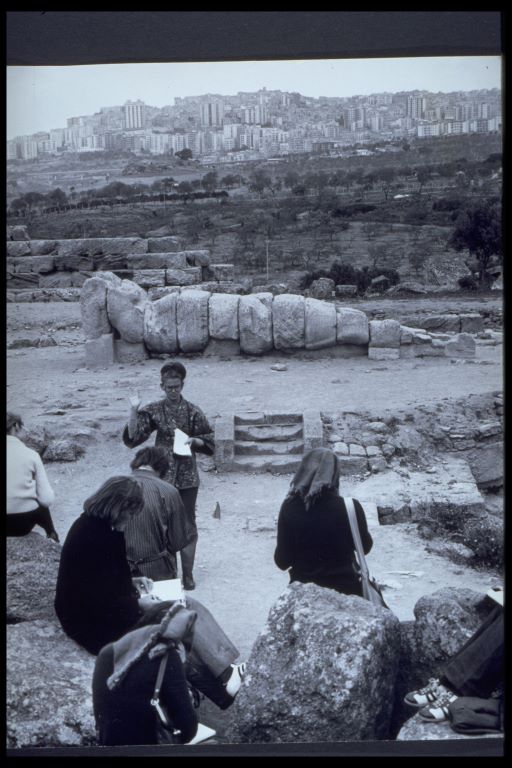Siri Sande was born on 27 September 1943. She studied classical archaeology, art history, and classical languages at the University of Oslo (UiO) and graduated with an MA in classical archaeology in 1972 with a thesis on Roman portraits in the 6th century AD. The following year she was employed as a senior lecturer at UiO, and she became Full Professor at the same institution in 1996. From 1983-1990 she was Deputy Director of the Norwegian Institute in Rome, to which she returned as Director from 2003-2007. During these years and until 2018, she was editor/co-editor of the Rome Institute's international journal series Acta ad archaeologiam et artium historiam pertinentia.

Siri Sande's master's thesis paved the way for the bulk of her academic publications, where, as a student of the Rome Institute's founder, Hans Peter L'Orange, she deals with themes related to late antique culture and visual art. During her research career, she has continued in this vein, with contextual investigations of ancient sculpture. In a series of analyses, she has shed light on ancient portraits in Norwegian private and public collections (Greek and Roman Portraits in Norwegian Collections, in Acta 10/1991). Similarly, in collaboration with Sven Ahrens, she has examined and analysed the antique sculptures and fragments in the National Museum's collection (Antikk skulptur: Katalog = Antique Sculpture: Catalogue, Oslo 2014). She also has an extensive scholarly and popularised production in which she has shown a sure loyalty to Norwegian international and national journals in the field of antiquities, such as Symbolae Osloensis, the Rome Institute's Acta, the Norwegian Athens Institute's publication series - and not least the Norwegian Classical Association's journal Klassisk Forum. Since 1989 and until today, she has contributed an article to every biannual issue of this journal, over 60 in all!
Unlike her teacher L'Orange, Siri Sande has also worked as a field archaeologist. In the years 1983-1987 she participated as Norway's representative in the joint Scandinavian investigations of the Castor and Pollux temple at Forum Roman. She was responsible for the publication of the temple's architectural decoration in its various phases, a painstaking "detective work" that resulted in the project's final publication (The temple of Castor and Pollux, vol. II-III). A few years later, 1993-2002, she directed the excavation of a small 13th century AD Byzantine fortress at the village of Petropigi in northern Greece, 20 kilometres east of Kavala, a fortress that was later taken over by the Turkish Ottomans. A first report has been published in Transactions 13/2004 (the journal of the Swedish Research Institute in Istanbul).
Professor Sande is currently working on a monograph on two late antique triumphal columns, erected by the emperors Theodosius and Arcadius respectively in Constantinople, another "detective work" among old drawings and scattered fragments. Over the years, she has also engaged in debates about ancient reworkings and modern forgeries in connection with established museum pieces and newly discovered sculptures from all over the Greco-Roman world. It is from this field that she draws the theme for her anniversary lecture at DNIR on Tuesday 10 October. She will talk about a controversial topic: The 'Piccolo Ludovisi' sarcophagus - a seventeenth century forgery?
We look forward to hearing about this, and also to gathering her colleagues and friends in Rome over many years to celebrate a thorough researcher and fabulous communicator!
